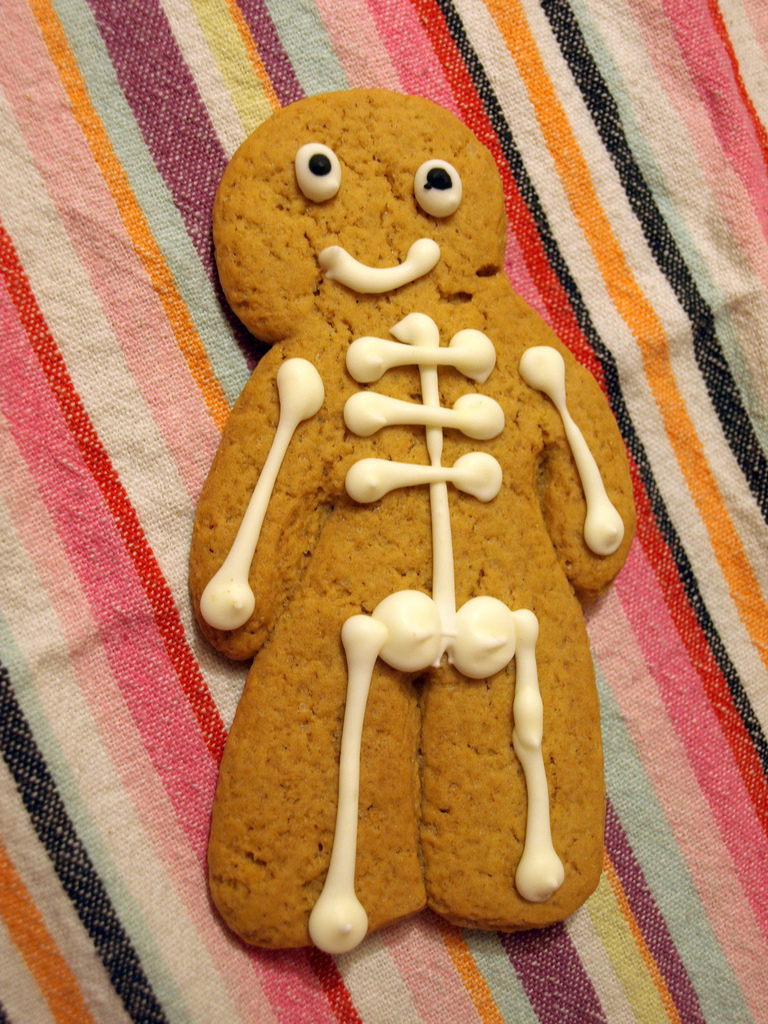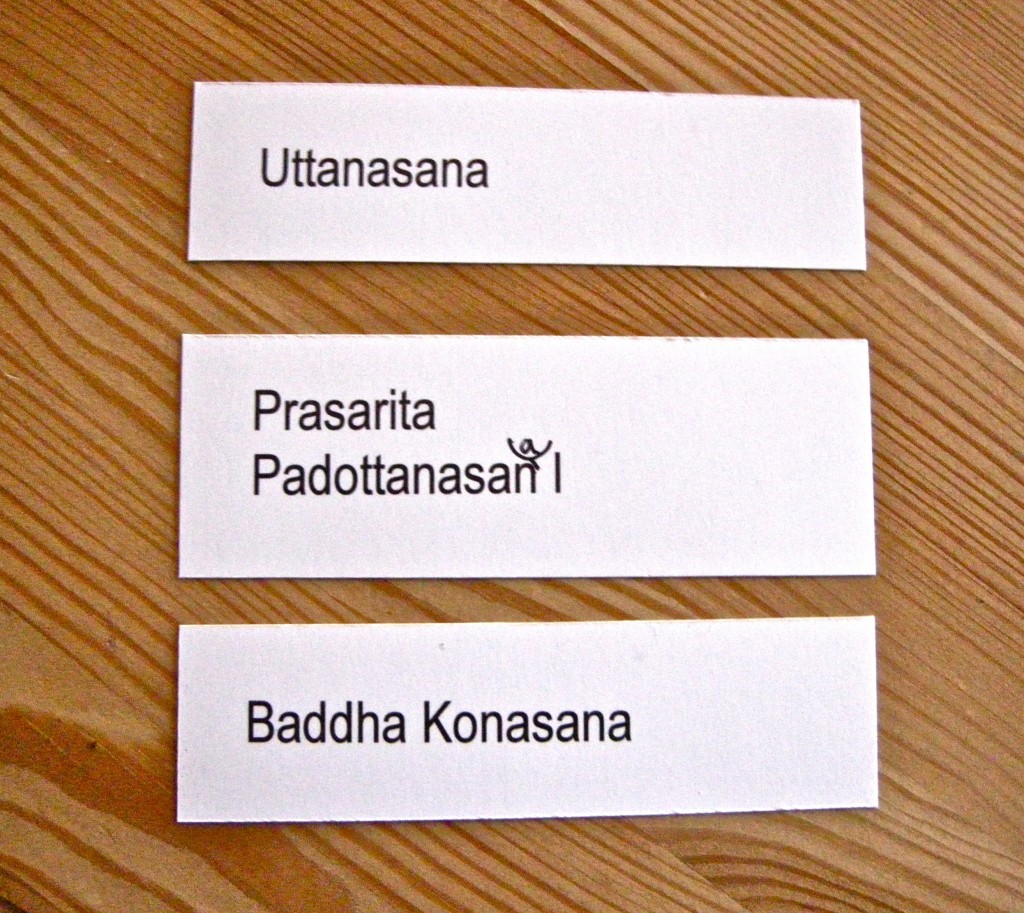As a yogi I practice, as best I can, non-grasping (aparigraha) and contentment (santosha), neither of which is helpful come late November and early December when we begin the first stage of our family Christmas, which is to make a wish list.
It’s been years since I’ve known what I wanted with anything like the certainty of my childhood requests to Santa. So I spend some time, think of books, music and bubble bath, and then email my list and Alan’s to my nieces, and stop thinking about it.
This year the question went underground for a week or two and then out of the blue, I suddenly knew, as if I were seven and it was a Muffie doll, that I wanted a skeleton for Christmas.
Yes, I know it’s not going to happen. There are good reasons why skeletons have never rivaled bikes, dolls and video games under the Christmas tree. It’s winter. There’s not a lot of daylight and much of the natural world is, if not dead, then certainly doing a good imitation.
No one needs another reminder of mortality right now.
But here’s why I want my own set of bones.
Other teachers at Yoga on 7th have occasionally stored skeletons at the studio. Our only place to keep them, other than out in the practice space, is in the closet with the hot water heaters.
So if I had my own skeleton, I would get to make the venerable “skeleton in the closet” joke time after time.
Seriously? There is no better way to understand and teach the three-dimensional reality of the bones than by studying a skeleton.
On a skeleton, you can see the delicate, floating shoulder girdle, connected to the ribcage only where the collarbones meet the sternum. Look at this structure often enough and you will understand that they are mobile and meant to glide, no matter what your upper back feels like after a day’s work.
Examples of this kind are endless, of course. One of the most important ones for me has been memorizing what the hip joint looks like, so I can visualize what I’m doing when I pull my femur heads deeper into my hip sockets to compact my hips.
Here’s another skeletal revelation: the bones of a skeleton are wired together. Without the wires, they would fall apart like an irregular game of pick-up-sticks.
The wrist bone is indeed connected to the arm bone, but it isn’t fused. Bones are pieces of living tissue held together by other pieces of living tissue. There are spaces between the bones. We are so much less solid than we often believe.
I once read a money book that suggested keeping financial magazines and newspapers out on the kitchen counter, on the theory that just walking by and glancing at them now and then would subliminally turn your mind in the direction of money.
Having a skeleton to look at works in the same way. It keeps us connected to our bodies on a basic level, as in relating to the base. Yes, there’s much, much more than bones to understand. But it’s the bones we align in our poses. Bones come first.
And just like the financial newspapers, skeletons offer both daily news and deeper analysis. You can’t study a skeleton, knowing that something similar exists beneath your skin, without beginning to understand the body as something other than the self. And that leads us back to the very reason skeletons are not a yuletide tradition: they encourage us to think of our own death, which is useful, but not festive.
So I’m reconciled to the fact that I’m going to be buying my own skeleton. What I don’t know is which one, exactly.
At the moment I’m thinking of a small model of the full skeleton and, either now or later, depending on the price, a full-sized spine and pelvis with anatomical features like the iliopsoas and the sciatic nerve.
Can you help? Have you bought a skeleton lately? Do you know a great source?
I have some suggestions of websites to look at, but I’m finding them confusing. Let me know about your experience.
Image Courtesy of Castaway in Scotland
If this was your kind of post you might also like:
Release Your Grip By Practicing Aparigraha
Bite-Sized Random Acts of Yoga continue daily. This one had obvious connections between Uttanasana and Prasarita Padottanasana, but Baddha Konasana, except of course for the long side ribs and the shoulder work, didn’t look all that related.
Then I thought about lifting the outer upper thighs in both of the standing forward bends, and moving the tops of the thighbones toward each other. There’s a very similar action in Baddha Konasana, when the outer thighs draw back toward the hips and in to the centre.






Comments on this entry are closed.
Hi Eve – glad we got to see each other at Louie’s recent ropes workshop – and congrats on your rope headstand! I do hope you’ll get a skeleton into your closet – of the literal variety – soon.
I said I’d send you a link to my blog – it’s: anitawebstercommunications.com/blog/. I wish you many exhilarating poses in 2011 – Anita
Thanks Anita! Great to see you too.
That rope headstand was one freaky pose – exhilarating too.
Thanks for the link.
Can’t help with any shopping advice but I can say that this is a fabulous column topped by a fabulous photo! Loved it.
And balancing the pelvic bowl . . . work of the pubis and sacrum to do that
Dear Eve, Yes, sometimes looking at bones can remind us of our mortality. When I look at bones as I have for a very long time in the physiotherapy world, I never cease to marvel at the wonder of it all. I am reminded many times of how fluid our bodies are and that includes bones. Bones can bend a long way, forgiving us the stresses we put through them, before they remind us that they are there to support us through our ambulatory life. Bones also remind us about relationships. It is in perfect alignment with each other that bones work best. Some of life’s little lessons n’est pas. Wishing you and yours a very Merry Christmas. Regards, Judy